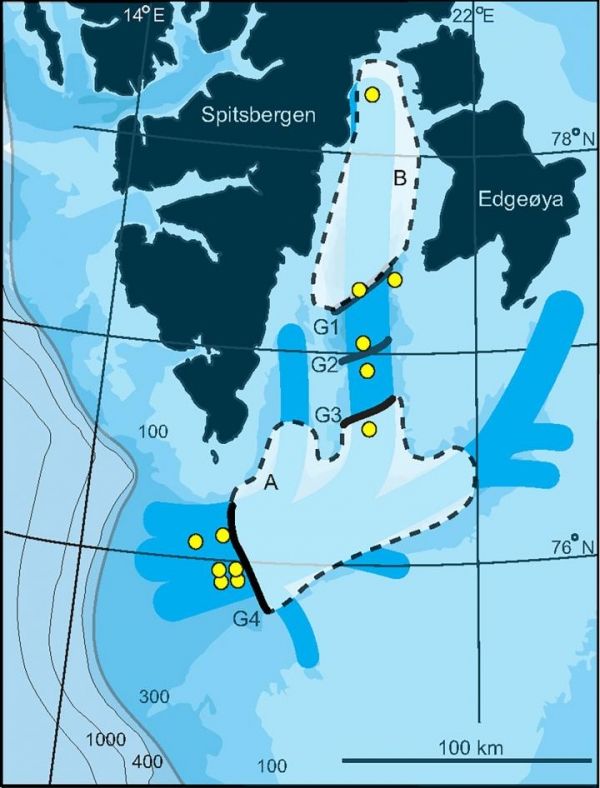10,000 km2 of ice disappeared in a blink of an eye from an ice sheet in the Storfjorden Through offshore Svalbard, a new study shows. This dramatic break off was preceded by quite a rapid melt of 2.5 kilometres of ice a year. This parallels the current melt rates in Antarctica and Greenland and worries the scientists behind the study.
“Our measurements of the ice retreat in Storfjorden Through show that the prevailing conditions to the great break off, match what we see in Antarctica and Greenland today. It is uncanny. There are new studies published almost weekly, that show that the retreat of current ice sheets is two to four km a year and that it’s speeding up.” Says CAGE-professor and first author Tine Lander Rasmussen.
Climatically unstable period
The last deglaciation, 20,000– 10,000 years ago, was a period of coexisting global warming and rapidly shrinking ice sheets. But stating the actual correlation between the two is not as simple as it sounds. The period in question was climatically unstable, and big melts were interrupted by re-freezing and formation of new ice. The speed of the ice retreat, relative to climatic changes, has therefore been difficult to establish.
Read more at UIT the Arctic University of Norway
Image: Map of Storfjorden and Storfjorden Trough with ice-sheet extent at 22,000 years and ice streams indicated. Areas, where the shelf ice and ice streams broke up during atmospheric and ocean warming are marked with whitish colours. (A) Collapse during the first warming phase c. 15,000 years ago. (B) Collapse at the start of the present warm period (intergladial) 11,000 years ago. Black lines marked G4 to G1 are groundings lines where the ice stood still for an extended period of time. (Credit: Illustration T. Rasmussen/E. Thomsen)


